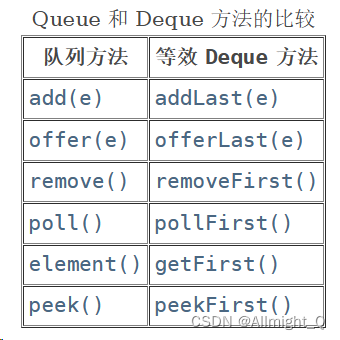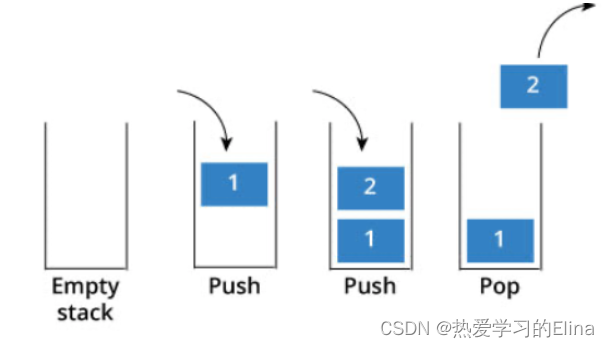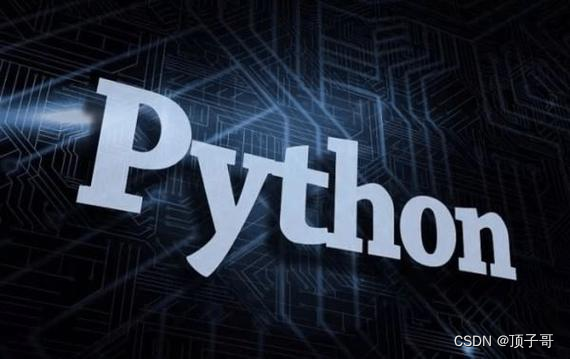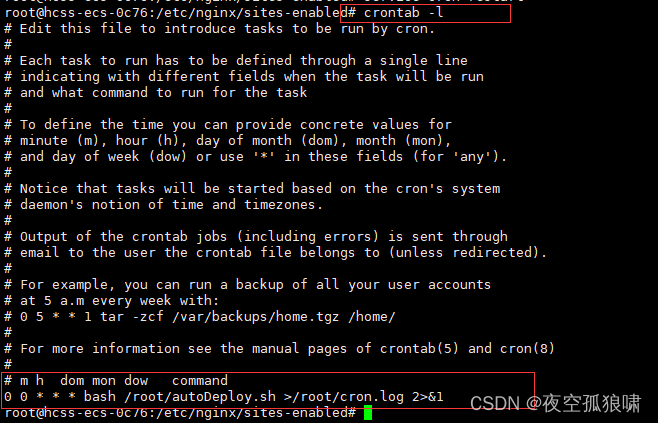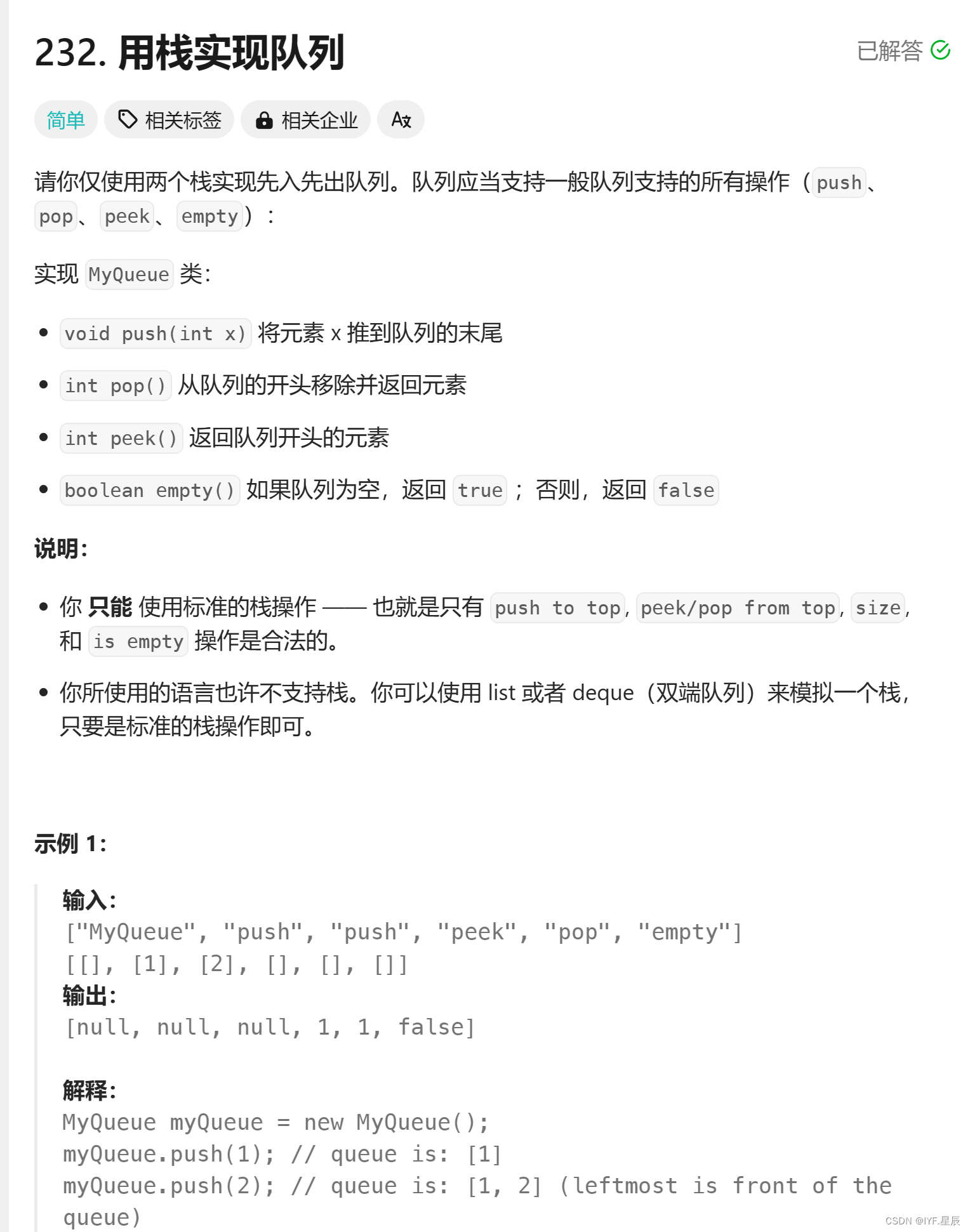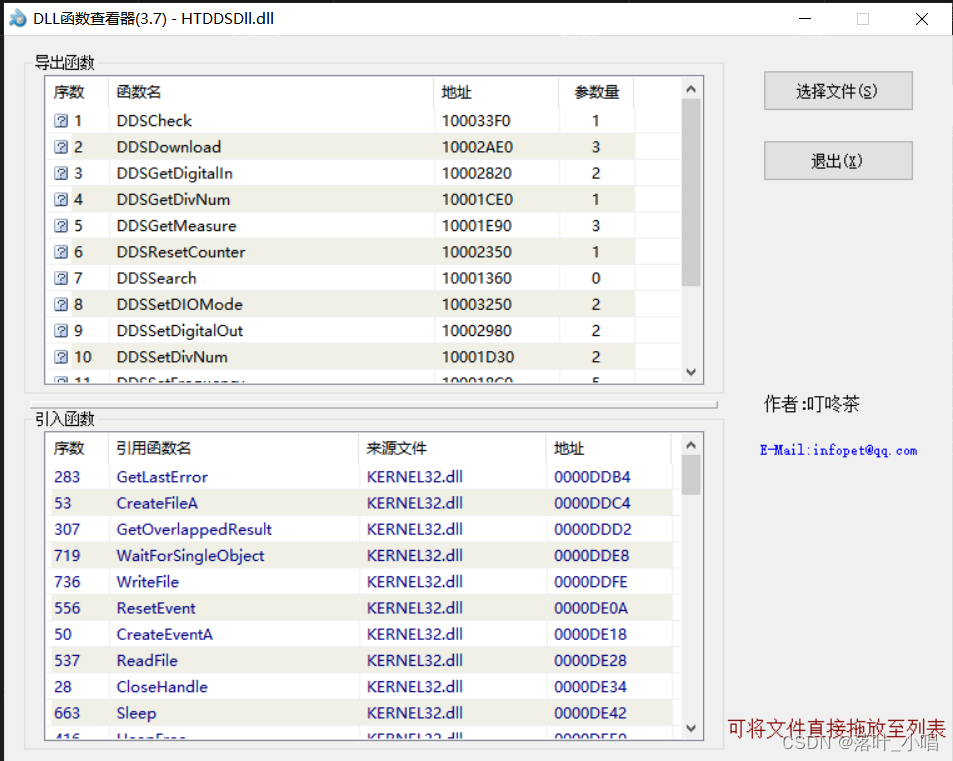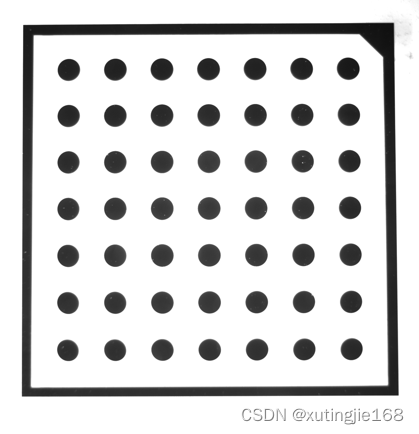今天学习的文章和视频链接
https://programmercarl.com/%E6%A0%88%E4%B8%8E%E9%98%9F%E5%88%97%E7%90%86%E8%AE%BA%E5%9F%BA%E7%A1%80.html
栈与队列理论基础
见我的博客 https://blog.csdn.net/qq_36372352/article/details/135470438?spm=1001.2014.3001.5501
232用栈实现队列
题目描述
请你仅使用两个栈实现先入先出队列。队列应当支持一般队列支持的所有操作(push、pop、peek、empty):
实现 MyQueue 类:
void push(int x) 将元素 x 推到队列的末尾
int pop() 从队列的开头移除并返回元素
int peek() 返回队列开头的元素
boolean empty() 如果队列为空,返回 true ;否则,返回 false
说明:
你 只能 使用标准的栈操作 —— 也就是只有 push to top, peek/pop from top, size, 和 is empty 操作是合法的。
你所使用的语言也许不支持栈。你可以使用 list 或者 deque(双端队列)来模拟一个栈,只要是标准的栈操作即可。
示例 1:
输入:
["MyQueue", "push", "push", "peek", "pop", "empty"]
[[], [1], [2], [], [], []]
输出:
[null, null, null, 1, 1, false]
解释:
MyQueue myQueue = new MyQueue();
myQueue.push(1); // queue is: [1]
myQueue.push(2); // queue is: [1, 2] (leftmost is front of the queue)
myQueue.peek(); // return 1
myQueue.pop(); // return 1, queue is [2]
myQueue.empty(); // return false
提示:
1 <= x <= 9
最多调用 100 次 push、pop、peek 和 empty
假设所有操作都是有效的 (例如,一个空的队列不会调用 pop 或者 peek 操作)
进阶:
你能否实现每个操作均摊时间复杂度为 O(1) 的队列?换句话说,执行 n 个操作的总时间复杂度为 O(n) ,即使其中一个操作可能花费较长时间。
题目分析
在push数据的时候,只要数据放进输入栈就好,但在pop的时候,操作就复杂一些,输出栈如果为空,就把进栈数据全部导入进来(注意是全部导入),再从出栈弹出数据,如果输出栈不为空,则直接从出栈弹出数据就可以了。
最后如何判断队列为空呢?如果进栈和出栈都为空的话,说明模拟的队列为空了。
在代码实现的时候,会发现pop() 和 peek()两个函数功能类似,代码实现上也是类似的,可以思考一下如何把代码抽象一下。
acm模式代码
#include <iostream>
#include <queue>
#include <stack>
class MyQueue {
public:
std::stack<int> stIn;
std::stack<int> stOut;
MyQueue() {
}
void push(int x) {
stIn.push(x);
}
int pop() {
// 只有当stOut为空的时候,再从stIn里导入数据(导入stIn全部数据)
if (stOut.empty()) {
while (!stIn.empty()) {
stOut.push(stIn.top());
stIn.pop();
}
}
int result = stOut.top();
stOut.pop();
return result;
}
int peek() {
int res = this->pop();
stOut.push(res);
return res;
}
bool empty() {
return stIn.empty() && stOut.empty();
}
};
/**
* Your MyQueue object will be instantiated and called as such:
* MyQueue* obj = new MyQueue();
* obj->push(x);
* int param_2 = obj->pop();
* int param_3 = obj->peek();
* bool param_4 = obj->empty();
*/
int main() {
MyQueue* queue = new MyQueue();
queue->push(1);
queue->push(2);
std::cout << queue->peek() << std::endl; // 输出 1
std::cout << queue->pop() << std::endl; // 输出 1
std::cout << (queue->empty() ? "true" : "false") << std::endl; // 输出 false
delete queue; // Don't forget to free the allocated memory
}
peek()的实现,直接复用了pop(), 要不然,对stOut判空的逻辑又要重写一遍。
再多说一些代码开发上的习惯问题,在工业级别代码开发中,最忌讳的就是 实现一个类似的函数,直接把代码粘过来改一改就完事了。
这样的项目代码会越来越乱,一定要懂得复用,功能相近的函数要抽象出来,不要大量的复制粘贴,很容易出问题!
255 用队列实现栈
题目描述
请你仅使用两个队列实现一个后入先出(LIFO)的栈,并支持普通栈的全部四种操作(push、top、pop 和 empty)。
实现 MyStack 类:
void push(int x) 将元素 x 压入栈顶。
int pop() 移除并返回栈顶元素。
int top() 返回栈顶元素。
boolean empty() 如果栈是空的,返回 true ;否则,返回 false 。
注意:
你只能使用队列的基本操作 —— 也就是 push to back、peek/pop from front、size 和 is empty 这些操作。
你所使用的语言也许不支持队列。 你可以使用 list (列表)或者 deque(双端队列)来模拟一个队列 , 只要是标准的队列操作即可。
我看完题目后的想法
用两个队列,一个队列存一个数便马上弹出到另一个队列
题目分析
一个队列在模拟栈弹出元素的时候只要将队列头部的元素(除了最后一个元素外) 重新添加到队列尾部,此时再去弹出元素就是栈的顺序了。只需要一个队列就可以实现。
acm模式代码
#include <iostream>
#include <queue>
class MyStack {
public:
std::queue<int> qe;
MyStack() {
}
void push(int x) {
qe.push(x);
}
int pop() {
int n = qe.size() - 1;
while (n--) {
qe.push(qe.front());
qe.pop();
}
int res = qe.front();
qe.pop();
return res;
}
int top() {
return qe.back();
}
bool empty() {
return qe.empty();
}
};
int main() {
MyStack stack;
stack.push(1);
stack.push(2);
std::cout << stack.pop() << std::endl; // 输出 2
std::cout << (stack.empty() ? "true" : "false") << std::endl; // 输出 false
}
/**
* Your MyStack object will be instantiated and called as such:
* MyStack* obj = new MyStack();
* obj->push(x);
* int param_2 = obj->pop();
* int param_3 = obj->top();
* bool param_4 = obj->empty();
*/

